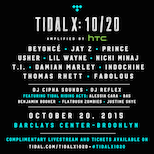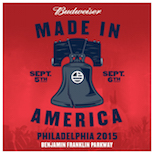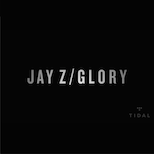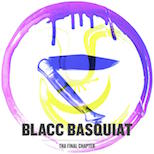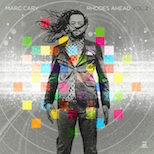Filmmaker Charlie Ahearn Reflects on 30 Years of “Wildstyle”
09.30.2013
MUSIC
It’s hard to believe that the film WildStyle is 30 years old. Then again, it’s hard to fathom that hip-hop is old enough to have such milestone anniversaries for creative contributions surrounding it. The dynamic thing about a flick like WildStyle is that it took the hip-hop community a while to understand its impact. While graffiti has evolved into an omnipresent element, the early stigma attached to it made it damn near impossible to regard it as a viable art form. Sure, anyone with one working eye can see the beauty surrounding most graffiti pieces. But its placement was always the issue. What WildStyle did was humanize the graff writer. Zoro’s relationship with Rose was one that lived beyond the spray paint, but it was also a tale that came from the lens of one Charlie Ahearn. The film director’s take on highlighting hip-hop is one that should be cherished. Ahearn sees the beauty in things that others often can’t, hence why he created a film like WildStyle so “prematurely” during hip-hop’s genesis. Thirty years later, WildStyle returns theaters for a short run starting on September 27th, offering a newly remastered version of the film. Life+Times spoke with Charlie Ahearn about the legacy of WildStyle, the popularization of graffiti, and how it all fits together.
Life+Times: It’s been 30 years since WildStyle came out.
Charlie Ahearn: Sure, and we’ve lost lots of soldiers in the struggle.
L+T: Yes, definitely.
Charlie Ahearn: People are not here. We’re not all here, but as much as possible, those who really are here… I’m just trying to say that it’s not just that the people in the film are in someway still friends, and in someway still creatively involved in something. Yes, you can say different people went in different directions, but I would like to think that there’s still a bond with the audience. There’s an unbroken bond of trust with the audience, and I think that’s what it was building on from the very beginning. When people came 30 years ago to Times Square, our biggest audience was high school students from all the boroughs. How did they know about it? We had almost no advertising budget! We had people with stacks of flyers going to all the high schools in all the boroughs and handing out flyers for the movie, and do you know that it was the second highest grossing movie in all of New York City the week that it first opened in Times Square? This thing was a below the radar, unprofessional movie that people didn’t even know what to call it. People called it a documentary because it was so like, rough. Technically, it was rough, and the way that it was made and the structure of the story… I mean I was sweating bullets because I didn’t know if people would event accept it as a movie. I thought, “People are going to say it’s a joke, not even a movie! What kind of movie is that?” But kids got it, and the word spread that you could see [Grandmaster] Flash, or you could see Busy Bee or you could see these people. No one knew who Fab 5 Freddy was at that time, but there was a feeling that somehow it was their world on the screen.
L+T: The thing that was pretty interesting was that you chose to highlight something that was just starting to happen, and that people were disregarding as a flash in the pan. Hip-hop was only like, six, seven years old?
CA: No, no, no! Listen, rewind! You can’t use that language. There was no historic perspective at all. Period. When people were coming upon it – let’s say in 1982 – they had known that there was Sugar Hill Gang and a few records had come out, and they knew Flash had released “The Message.” But as a culture, you can’t refer to it as six-years-old or whatever you just said, because there was no perspective. People would come up to me in 1980, and they were like, “When are you going to shoot it? You better hurry!” because they thought, “Well you should just shoot something. Just shoot it and show it, because it’s going to be over by Spring of ’81 or ’82. It’s going to be over, and you’re going to be out of luck.”
L+T: They didn’t know the start date, but they were anticipating an end date already?
CA: Well because people thought… Sugar Hill Gang, people heard that record and it wasn’t really hip-hop. It was a novelty record. It didn’t have anything really behind it to speak of, and the whole culture that was behind it, people had no idea about it. But people on the street had been collecting the cassette tapes. They knew who Afrika Bambaataa was, they knew Flash’s parties, you know, Busy Bee versus Kool Moe Dee? They knew the battle tapes, and these people were, in a sense, street stars. Rock Steady Crew was unknown. When we shot the movie, we shot two versions of the movie. When we first shot it in 1981, I didn’t even have them on the stage at the amphitheater. They were down in the audience, because there was no such thing as breakdancing on the stage. It didn’t exist as that. It was part of what kids did in the audience, and making circles in the audience. It wasn’t for show, and so when we placed them on stage in the middle of this thing with the graffiti around them at the amphitheater, I mean in all humility, we were projecting the future. This was not documentation of something that was happening in the Bronx or anywhere else. That’s why, in a way, when it first came out, it was still too early.
The actual movie jumped off with a meeting between Fred Braithwaite and myself in June of 1980, and that sparked a very concrete plan to make a movie which would tell a story of how this whole thing was a culture. There was graffiti, there was scratch mixing, MCing, breakdancing, and what it was, there was no blueprint for that and I knew even from the beginning that I wanted to do something that would be a narrative because I wanted to display it in a movie theater. I didn’t want it to go on PBS on television as a documentary, which is what they did at that point. You know, on some level, I wanted to create a low-budget pop movie.
When it came out in ’83, it was still a year ahead of the rest of the world and people didn’t really know what it was, especially when it went out into other cities. Philly knew what it was, because Philly had always been taking cues from New York. That’s like our sister city. Graffiti started in Philadelphia in the late ‘60s. We’ve been communicating since then, or before. But we went to Chicago and there was zip in Chicago! They thought it was a science fiction movie. They had no reference point! It was too early, is what I’m trying to say. The movie went through this whole process of being too early, falling on its face, having some people going, “Oh my God! What is that? That’s incredible,” and then it gradually became this thing of this so-called “historic document of Hip-Hop.” It only became that in the ‘90s, and it started honestly with Nas and The Beastie Boys. That’s when people started referencing back to it because it referenced their childhood and it became a historic document. Before that, it was like, “What is this?” and then it was like, “Whoa!” and then it was like, “Oh forget about it. That’s so yesterday!” By 1985, it was like, “Forget about it! That’s over! Breakdancing? That’s over! The graffiti culture? That’s over!” By ’86, it was like the bloom is off the rose, we’re on to the next thing. And then it was like the heyday of the hip-hop groups. You know, the big push for the first really big push with Run-DMC and I’m going to get hoarse, but you know what I mean. By that time, nobody was thinking about Wild Style, believe me. It was not even in circulation. You couldn’t even get the videotape, if you get the picture.
L+T: Why do you think people have such a strong connection to the film 30 years later?
CA: Because in this world, people are always trying to rewrite history. It’s like the strong survive, and whoever has the best access to the media are always going to tell the story in their way. Yes I’m talking to you right now, so that’s part and partial of it. I would say I’m very proud of the fact that we didn’t make it up, we didn’t make something that was trying to sell something. I was pretty good about getting around all these roadblocks when we made the movie. I won’t name names, but I avoided turning the movie into a selling market place for whoever was the popular MC of that moment. I’m not even going to get into that. I would say generally, anyone who knows anything about real graffiti history cannot deny the fact that Lee [Quinones] was… Not only was he a great artist, but he knocked out hundreds of whole cars. This guy was – if anyone deserves that role, it was Lee. The fact that I was able to get him in that role and that he didn’t even want his picture taken, much less to be in the movie, because he was wanted by police for so many counts. For him to be appearing in this movie with [Lady] Pink, who was also on the trains, is a testament to a certain trust.
L+T: Graffiti artists didn’t like to show their faces.
CA: They didn’t, and they were very, very hypersensitive about it, and so it’s insane that we got permission. It was the only permission we got in the whole movie was to go into the subway yards, and even then, Lee refused to go into the yards because it was crossing a line, for him, some kind of sacred territory. He opted out sick for the night, and so DONDI who was our code second lead. He donned the du-rag and played Zoro for this shoot. And everybody knows that Dondi was number two next to Lee as far as the trains. So in other words, the more you know about what happened and everything, the more authentic it becomes. So if people want to call it a documentary, I’m not going to argue, but I’m a film buff so I know it’s not a documentary. Documentaries have interviews, and I didn’t want to do that.
L+T: What was your connection to graffiti and the whole hip-hop culture? Obviously you’ve been into hip-hop from the beginning…
CA: Well I won’t say the beginning, because that yawns into a pit. I won’t go there, but I will say that my roots are deep and that my roots are that I was shooting film around the Smith Projects, which is where Lee was from. I was shooting 16mm film there in 1977. I have murals that he did; I have kids breakdancing from 1977. Then I made a Super-8 kung-fu movie, a feature kung-fu movie in Super-8, that was completely shot in the Smith Housing Projects and had Lee’s murals in it and lots of other things. To me, at that point, kung-fu movies were the visual standard of street culture in New York at that time, because there was nothing. Nothing existed except to go to 42nd Street and see the kung-fu movies, and all the B-boys did that and it completely influenced what the b-boys were doing. So in some way I was there, in my own corner. I traveled around Europe in 1978, and showed this kung-fu movie to all cities in Europe in ’78, so that’s pretty early.
L+T: Are there any other projects that you’re currently working on?
CA: I’ve got a brand new feature documentary that’s in release, that’s traveling all around the world and the United States. It’s called Jamel Shabazz Street Photographer, and there’s a trailer for it if anyone wants to see that, if they just Google that name, “Jamel Shabazz Street Photographer.” It’s traveling to every major city in the country. It’s right now traveling to cities as a theatrical event. It played in New York at the Brooklyn Academy of Music (BAM) to sold out crowds, and we had Jamel Shabazz there and we had Fab Five Freddy there and a whole host of other great people helping rep the movie. So it’s another whole way of looking at this whole thing that we’re talking about.
L+T: It must feel good to be part of something that has the staying power of WildStyle. Nowadays, we don’t know what’s going to have staying power because everything is so short-lived.
CA: We don’t! Yes, it’s tremendously joyful for me to feel the love and respect that I get for the film from around the world. Honestly, I’m not a figurehead, I’m not an MC, I’m not here to rep the movie. I’ve never been a figurehead that way, but I can see what’s happening and I’m very joyful about it. I celebrate it.
